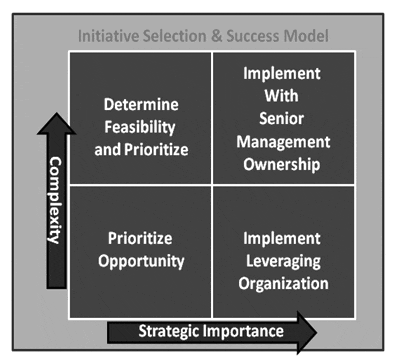
In senior executive circles, the idea that True Customer Intimacy is a business model transformation initiative is often greeted with knowing smiles and nods, but little understanding of what’s truly required. More often than not, the CEO expresses great interest in the Customer Intimacy model but then wants to implement it along with 20 other initiatives, assign it to some low level committee, and hopes to be done in a year.
I can tell you from many years of experience, it won’t work and you will waste whatever time and money you put into it.
Company after company will tell me that “customer intimacy” is one of the most important challenges for them to solve and that they’re willing to spend significant funds on the issue but, in the same conversation belittle the effort and attention required to move the dial.
Transforming your business model in any significant way requires significant senior executive involvement and the dedication to make it the way you do business. Just look back at the historical change programs at GE under Jack Welch’s tenure. There was little doubt that he, Welch, was in charge of the transformation of GE.
Executive involvement and dedication means defining the success criteria and milestones appropriately, aligning organizational incentives, assigning and holding accountable a seasoned senior executive to lead the transformation and continually inspecting progress. In other words, it should be a top priority topic on every executive leadership team meeting agenda until it becomes the way your company does business naturally.
The Customer Intimacy Journey™ is a much larger transformation than a Six-Sigma initiative; it literally impacts every function in the business across all boundaries. I’ve seen companies embark on the transformation effort, only to see their staff functions fight each decision and action along the way. They cut off their noses to spite their faces, cheering that they were able to stop the journey.
We know from 27 years of experience that it is very difficult to change a major enterprise – look how long the car companies have been trying to change – and we know it takes top executive involvement and commitment to make the Intimacy Engine™ journey a success.
I understand that there is limited time for the leaders of a company to involve themselves in new things and it is difficult to know what’s most important. Furthermore, without knowing a company’s situation in detail, I cannot speak to how important the move to the True Intimacy™ model might be for them, but if it is strategically important, then the level of complexity of the journey must be well understood so that the entire senior executive team can see that their personal and passionate involvement is crucial to success.
It’s all about priorities – better to pick the most critical initiative and execute it well, than to try to do too many things – all of them half-heartedly. I understand the pressure is to deliver instant results. But, can these results be sustained? And can you keep the momentum going?
